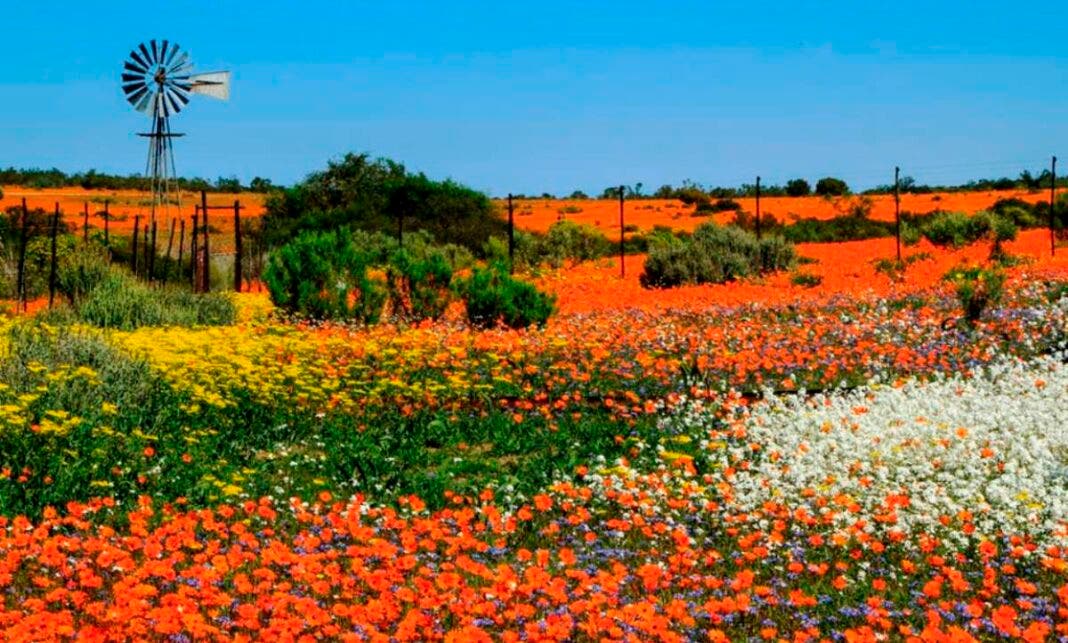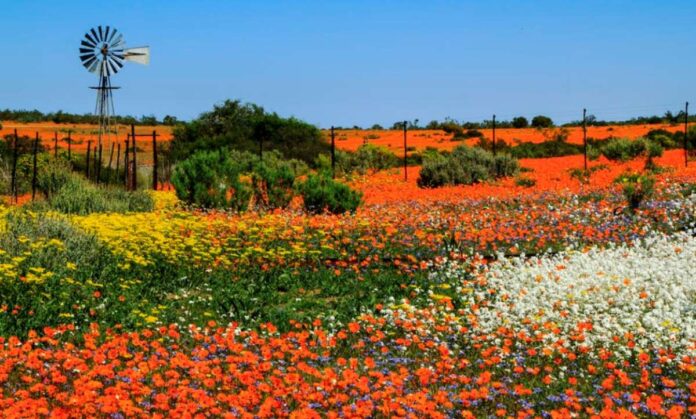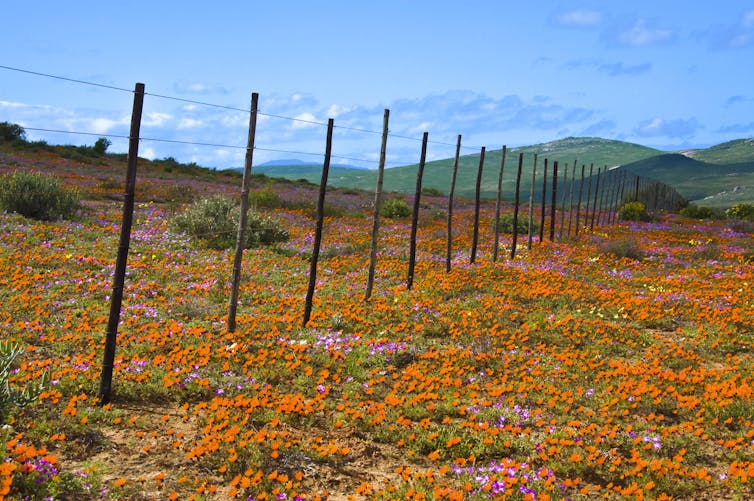

In late August each year, the normally barren landscape of the Namaqualand, along the western boundary of South Africa, is transformed into a vista of brightly coloured daisies as far as the eye can see. The flowering of the Namaqualand daisies attracts close to 10,000 tourists per season to a part of the country that doesn’t get many visitors otherwise. But climate change poses a threat to the flowering event, and to the tourist arrivals which generate regional income.
The Namaqualand daisies (Dimorphotheca sinuata) are endemic to the Northern Cape and Western Cape provinces of South Africa, and have evolved to survive the harsh, dry climatic conditions. During the early spring, flowering of the daisies is triggered by the change in temperature and rainfall. This is an example of what is termed a phenological event.
Phenological events – such as the timing of spring blossoming, fruit development in summer and the hibernation, hatching, and mating of animals – are among the most sensitive bioindicators of climate change. Across the world, the timing of phenological events is shifting as a result of climate change. Plants and animals experience “spring” as happening in what used to be “late winter”. Simply put, temperatures in the late winter months are increasingly higher than they used to be.
The rate of change in the timing of phenological events is, however, highly species and location-specific. For this reason, it’s important to study as many different plants and animals, in as many places, as possible. When we know the rate of change for a particular species and location, we can tailor our adaptation. This is particularly important for the Namaqualand daisies so that we know when to book tourist visits.
Phenological research is sparse in Africa, compared to Europe, North America and East Asia. This is largely due to a lack of deliberately collected phenological data to analyse.
Recent studies of shifts in the timing of flowering of jacarandas in Gauteng, and of the migration of the sardines along the east coast of South Africa, have revealed the importance of traditional news media and social media records as sources of data. We used the same approach to study changes in the timing of the Namaqualand daisies. This is important for planning tourism and for understanding more about nature’s responses to climate change.
The research (word from a specialist)
We compiled a total of 663 records of flowering dates of the Namaqualand daisies from a selection of daily newspapers spanning 1935-2018, and from posts on Flickr and iNaturalist. Each record was coded in terms of the date of reporting, date of observation, and the extent of bloom reported – first flowering, peak bloom, and end of the flowering season. These dates were then analysed for changes through time. We found an advance in the timing of first flowering, peak bloom and the end of the flowering season.
The most rapid, statistically significant advance was found for the first flowering dates, at a rate of 2.6 days per decade. Peak flowering advanced at 2.1 days per decade. As there were fewer records of end of bloom dates, the trend is not statistically significant but indicates a tentative advance at an even faster 2.8 days per decade.

